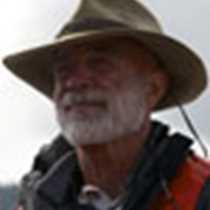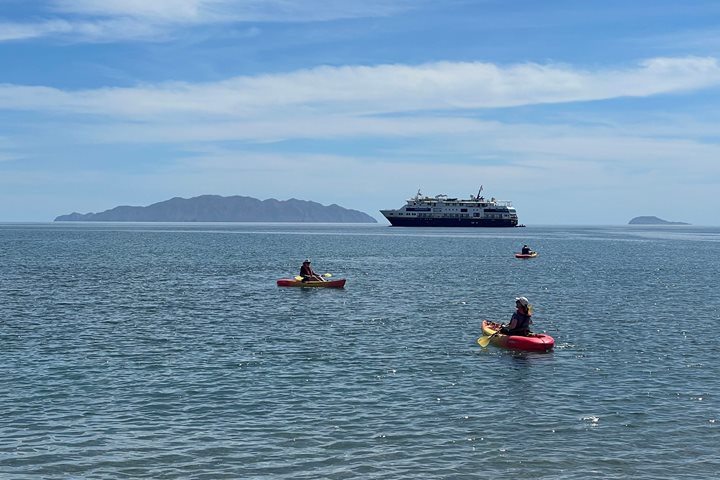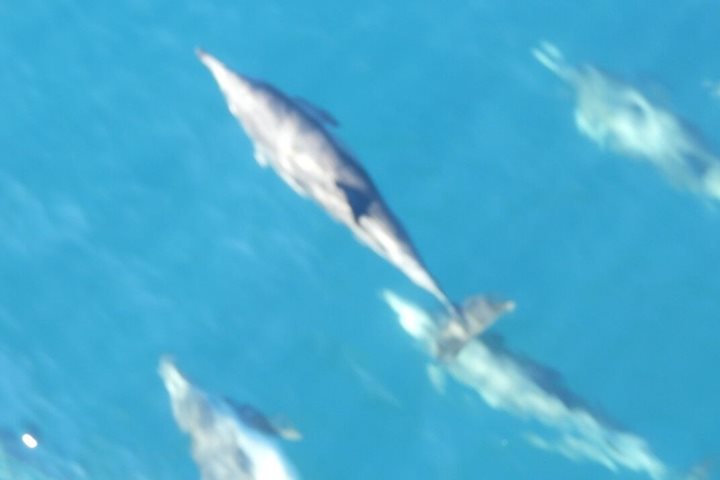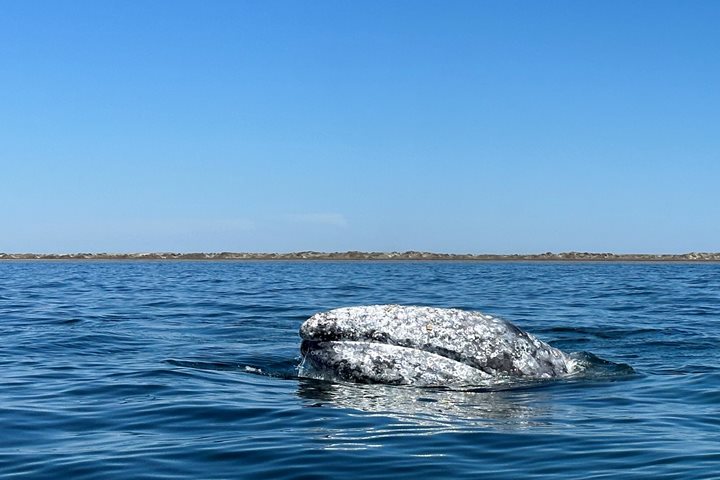This morning began with a lovely, soft sunrise over the Baja Peninsula and a cool ocean breeze, along with a morning wake up call from Jim Kelley, our expedition leader. After a briefing on the use of our inflatable boats, off we went to walk across the beautiful sand dunes of Isla Magdalena to Bahia Santa Maria on the Pacific Ocean side of the island. There were naturalist led walks for generalists, birders and photo enthusiasts through this amazing desert dune landscape between the bay and ocean waters: sturdy flowering plants, gorgeous dunes in the morning light, fresh prints of coyote, jack rabbit, beetle, crab and bird. It was nothing less than magic!
During the afternoon National Geographic Sea Lion made her way through Hull Canal, the winding channel between Magdalena Bay proper and Upper Magdalena Bay where we will be whale watching for the next two days. It was a very low tide in the channel with extensive mud flats exposed nearby on both sides of the ship and a multitude of shore birds feeding there: egrets, herons, ibis, and a variety of sandpipers. We even watched 3 coyotes foraging along the shoreline near the edges of the mangrove barrier.
Devils Bend, at the end of the Hull Canal, marked the boundary between Lower and Upper Magdalena Bay and the beginning of the Great Gray Whale Count that has been ongoing for the past 25 years aboard the National Geographic Sea Lion and National Geographic Sea Bird. The feeling on the ship was electric as we rounded a bend in the lagoon waterway and saw our first gray whale, a mother and her young calf. At first all we could see was the huge spout of the exhaling female but that was shortly followed by the cute little puff of the youngster. We counted 5 mother/calf pairs and 4 single adults in our path before we stopped to drop anchor just inside the dune lined shoreline of upper Magdalena Island.







